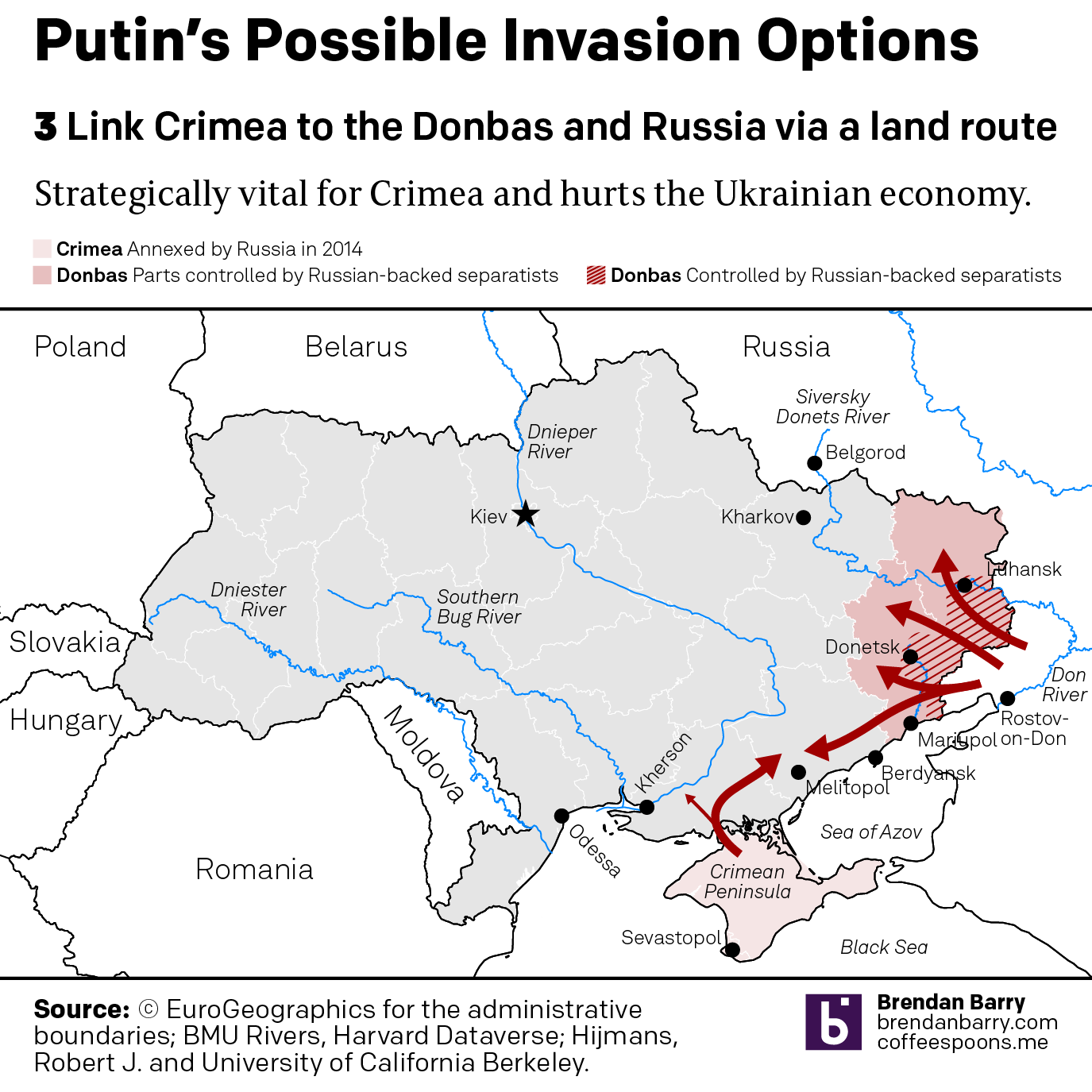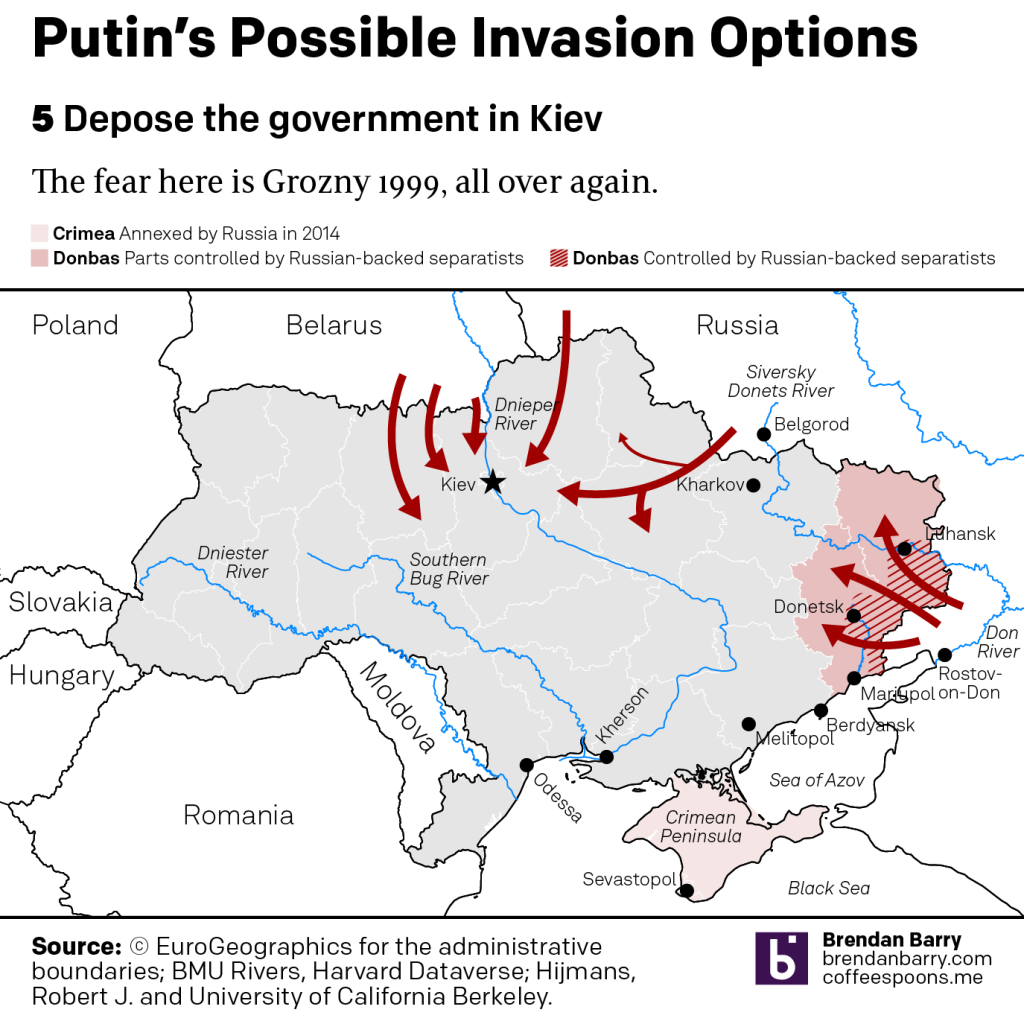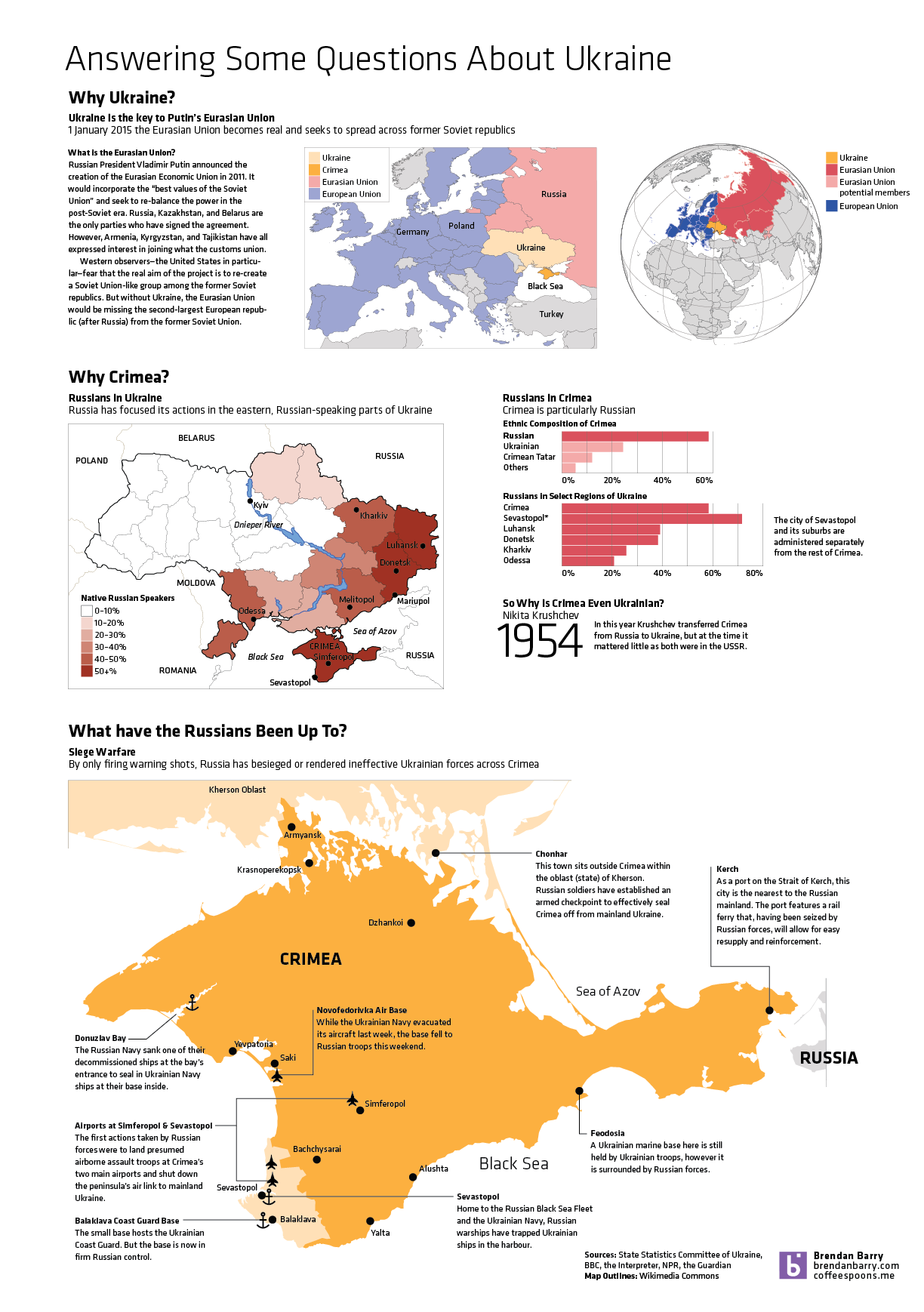So first, these maps are from last night and by the time this posts, most of the daytime in Ukraine will have happened and things on the ground could have changed dramatically. But let’s start the week out with where things are at in Ukraine.
In short, on most fronts not a lot has changed since my post last week. The only area where you’ll see some differences is in the south in the Donbas and along the Sea of Azov.

In the north and west of Kyiv, the Russian offensive has largely ground to a halt. Russian ground forces appear to be moving south in an attempt to encircle the city in coordination with Russian forces moving east from Sumy. In the meantime Russian artillery continues to devastate Kyiv’s suburbs, though the city proper is not nearly in bad a shape as Kharkiv and Mariupol. Meanwhile, forces moving south from the area around Chernihiv remain stuck, north of Kyiv. Though some forces may have been diverted in an attempt to encircle Chernihiv in preparation to try and take the city. If the Russians could take the city, it would allow for a more direct line of supplies from the north.
Kharkiv remains in Ukraine’s control, but Russian artillery forces continue to bombard the city almost nonstop. Photos of the city show a city that looks more like Grozny in 1999. However, some Russian forces have begun to move south from the city and into the Donbas in the direction of Izyum. This isn’t far from the cities of Slovyansk and Kramatorsk, which were key battlegrounds back in 2014.
Further east in the Donbas, Russian and separatist forces are slogging through heavy combat, but are making progress on the city of Severodonetsk, a key intersection of several highways. Russian forces have been advancing on the city from the north, northeast, and southeast.
South in the Donbas the same Russian and separatist forces have broken through the Ukrainian defences in Volnovakha. They have moved into the interior of Zaporizhzhia oblast and are in position to link up with Russian forces moving east/northeast from the Crimean front.
If Kyiv is Ukraine’s best front, the Crimean front remains Russia’s. Forces have split into perhaps three axes. The aforementioned group has taken the city of Melitopol and is pushing east towards the Donbas in support of another group that has moved to encircle and besiege Mariupol. Mariupol remains cut off from Ukraine and Russian forces have been bombarding the city, the size of Miami, almost nonstop. We haven’t seen many photos of Mariupol, but it’s almost certainly worse than what we’re seeing out of Kharkiv.
Another group from Crimea is moving north towards the city of Zaporizhzhia after having captured the nuclear power plant at Enerhodar.
The other main group moved west towards the city of Kherson. After capturing that strategic city, forces moved northwest towards the city of Mykolaiv. But over the last week, they haven’t been able to take the city. Instead, there we are seeing perhaps reconnaissance forces probing the approaches north towards the city of Kryvi Rih, which controls the western approaches to Dnipro and Zaporizhzhia.
When we look at it altogether, what can we glean about Putin’s plan?

First and foremost, Putin still wants Kyiv. The bulk of his forces are in position to try and encircle the city and besiege it. If he can do that, he can try to then eliminate Ukrainian president Zelensky. That hasn’t changed. I want to focus on the southern theatres of the war.
I’ve highlighted the general area of Ukrainian areas of operation in yellow. In blue arrows I’ve drawn what I think will be Russia’s planned axes of movement. Looking east to west, the first objective is to clearly encircle Severodonetsk and crush Ukrainian resistance in the region. West of the city, we have two clear axes of movement aiming to meet up at probably Dnipro. This would encircle the larger yellow area, the concentration of Ukraine’s best troops, which have been fighting Russian-backed forces in the Donbas for eight years. With the whole region surrounded, Russian artillery and air power could attrit Ukrainian forces and attempt to destroy them without significant ground contact.
You can see a smaller version of that plan just north and west of Mariupol. The forces breaking out of Volnovakha are in position to link up with the Crimean forces, effectively cutting the whole area off from Kyiv’s control. Again, with these being some of Ukraine’s most effective units, this would deprive Kyiv of valuable reinforcements.
Further west, Putin probably wants to capture Mykolaiv desperately. He needs the city to safely cross the Southern Bug river. That’s perhaps the last main natural defence for Odessa. Whilst Russia has created an effective blockade in the Black Sea, controlling Odessa would put Ukraine’s third-largest city in Putin’s hands.
Extending north and west from Mykolaiv we have another new offensive focus: Kryvi Rih. If Putin could take this city he would open up another axis of advance upon Dnipro and Zaporizhzhia.
But this all points to what I think is an under-discussed strategic goal: the southern land bridge linking Crimea to Russia. In 2014, when Russian and Russian-backed forces agreed to a ceasefire with Ukraine, the Russian forces never left. Crimea was fully annexed and constitutes an integral part of Russia whilst the Donbas saw two semi-states carved from the Ukrainian oblasts.
If Ukraine cannot force Russian units to retreat, I fear that any negotiated peace with Russia will see these areas—if not along with others—ceded by Ukraine to Russia. This could either take the form of territory added to Russia or as a new state that would be de facto under the control of Moscow.
And while Putin’s advances in the north have thus far ground to a halt, he continues to make good, if not slow, progress in the south.
Credit for the piece is mine.












